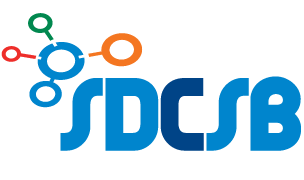Genetics, Bioinformatics and Systems Biology Colloquium
Thursdays, 12:00 pm – 1:00 pm
UC San Diego, Powell-Focht Bioengineering Hall, Fung Auditorium
Complete schedule here
Investigators: Jeff Hasty, Terry Hwa, Eric Bennett, Nan Hao, Lev Tsimring
Protein abundance levels are controlled through regulatory processes that govern their synthesis and degradation. Although translational control is now a widely appreciated mechanism for gene regulation and proteome remodeling, a systems level description of the effects of translational regulation on cellular phenotype remains unknown. Previous approaches have used the rates of translation and degradation under steady state conditions to generate deterministic models of protein biogenesis. Yet how cellular proteome flux responds to environmental changes remains poorly understood. It is clear though that limiting nutrient availability or changing carbon source utilization can alter translation and degradation rates. This project’s goal is to discover the processes that regulate and adapt proteome flux to environmental change and to use this knowledge to predict the cellular response to such changes.
Understanding how proteome structure influences gene expression dynamics will be crucial for a systems level understanding of cellular adaptations to dynamic environments. Since all mRNA’s share the same pool of translational components, an inherent coupling exists between mRNA translation rates in the cell. This coupling can become especially pronounced during periods of rapid environmental change. For example, when nutrient availability changes, the cell must balance its changing access to nutrients with its available anabolic pathway capacities. Through the process of evolution cells have developed a coordinated system that regulates transcription, ribosome biogenesis, translational capacity, protein synthesis and doubling time depending on nutrient availability. Determining how nutrient dynamics affect the cell’s translational capacity will reveal numerous details of the coordination between these various sub-systems and how they are tuned to adapt a cell to new environmental conditions. To achieve a rigorous description of these interactions we will combine theoretical modeling with experimental validation to quantitatively describe system wide cellular adaptations to changes in nutrient availability.
| This project will deliver a broad understanding of how nutrient availability alters cellular proteome flux, with relevance to both the basic and applied life sciences. This knowledge will arise through a maps-to-models approach that incorporates transcription, translation and degradation to describe metabolic pathway dynamics. The modeling and experimental approaches described here follow closely from work performed by the project leaders during the first funding period of the SDCSB. In previously published work funded by the Center, we have demonstrated how overloading of protein degradation machinery can lead to coupling across genetic circuits (Prindle et al., Nature 2014) and how mRNA transcripts can compete for limited translational resources, especially in dynamic environments (Behar et al., Cell 2013). This previous work is directly applicable to our current research efforts. |
|
Recent SDCSB Publications by these Investigators:
- Garshott, DM, Sundaramoorthy, E, Leonard, M, Bennett, EJ. Distinct regulatory ribosomal ubiquitylation events are reversible and hierarchically organized. Elife. 2020;9 :. doi: 10.7554/eLife.54023. PubMed PMID:32011234 PubMed Central PMC7064338.
- Xiong, L, Cao, Y, Cooper, R, Rappel, WJ, Hasty, J, Tsimring, L et al.. Flower-like patterns in multi-species bacterial colonies. Elife. 2020;9 :. doi: 10.7554/eLife.48885. PubMed PMID:31933477 PubMed Central PMC6959979.
- Liao, MJ, Din, MO, Tsimring, L, Hasty, J. Rock-paper-scissors: Engineered population dynamics increase genetic stability. Science. 2019;365 (6457):1045-1049. doi: 10.1126/science.aaw0542. PubMed PMID:31488693 PubMed Central PMC6988775.
- Jin, M, Li, Y, O'Laughlin, R, Bittihn, P, Pillus, L, Tsimring, LS et al.. Divergent Aging of Isogenic Yeast Cells Revealed through Single-Cell Phenotypic Dynamics. Cell Syst. 2019;8 (3):242-253.e3. doi: 10.1016/j.cels.2019.02.002. PubMed PMID:30852250 PubMed Central PMC6514117.
- Baumgartner, BL, O'Laughlin, R, Jin, M, Tsimring, LS, Hao, N, Hasty, J et al.. Flavin-based metabolic cycles are integral features of growth and division in single yeast cells. Sci Rep. 2018;8 (1):18045. doi: 10.1038/s41598-018-35936-w. PubMed PMID:30575765 PubMed Central PMC6303410.
- Cooper, R, Tsimring, L, Hasty, J. Microfluidics-Based Analysis of Contact-dependent Bacterial Interactions. Bio Protoc. 2018;8 (16):. doi: 10.21769/BioProtoc.2970. PubMed PMID:30370317 PubMed Central PMC6200413.
- Fulzele, A, Bennett, EJ. Ubiquitin diGLY Proteomics as an Approach to Identify and Quantify the Ubiquitin-Modified Proteome. Methods Mol Biol. 2018;1844 :363-384. doi: 10.1007/978-1-4939-8706-1_23. PubMed PMID:30242721 PubMed Central PMC6791129.
- Xiong, L, Cooper, R, Tsimring, LS. Coexistence and Pattern Formation in Bacterial Mixtures with Contact-Dependent Killing. Biophys J. 2018;114 (7):1741-1750. doi: 10.1016/j.bpj.2018.02.012. PubMed PMID:29642042 PubMed Central PMC5954290.
- Dai, X, Zhu, M, Warren, M, Balakrishnan, R, Okano, H, Williamson, JR et al.. Slowdown of Translational Elongation in Escherichia coli under Hyperosmotic Stress. mBio. 2018;9 (1):. doi: 10.1128/mBio.02375-17. PubMed PMID:29440576 PubMed Central PMC5821080.
- Cooper, RM, Tsimring, L, Hasty, J. Inter-species population dynamics enhance microbial horizontal gene transfer and spread of antibiotic resistance. Elife. 2017;6 :. doi: 10.7554/eLife.25950. PubMed PMID:29091031 PubMed Central PMC5701796.













